
Cast * Profile of Jim Cummings * Interesting Facts * Production Details

Cast * Profile of Jim Cummings * Interesting Facts * Production Details
Directed by: Jun Falkenstein
Written by: A.A. Milne
Music by: Richard M. & Robert B. Sherman
Released on: February 11, 2000
Running Time: 77 minutes
Budget: $15 million
U.S. Opening Weekend: $9.427 million over 2,723 screens
Box-Office: $45.5 million in the U.S.
Video Revenue: $90 million from DVD and VHS rentals and sales
Winnie the Pooh/Tigger... Jim Cummings
Eeyore... Peter Cullen
Piglet... John Fiedler
Rabbit... Ken Sansom
Christopher Robin... Tom Attenborough
Narrator... John Hurt
Roo... Nikita Hopkins
Kanga... Kath Soucie
Owl... Andre Stojka
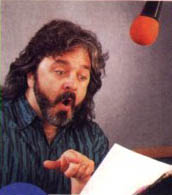 Born
in 1953, Jim Cummings grew up in Youngstown, OH. He has been providing
the voice for today's cartoon icons, including Winnie the Pooh and the
Tasmanian Devil, since 1984. Jim also does voice-overs for some movie trailers:
"I'm usually the guy who says, 'Bruce Willis and Denzel Washington in The
Siege'," Jim Cummings said in an interview with the Dodge Globe in
November 1998. "I do movie trailers, cartoons and just about anything
my agency can hook me up with. They [International Creative Management]
send me faxes with available jobs and then I go. I live in Santa
Rosa, CA, 30 minutes from Los Angeles, so I just drive down and do my cartoon
or trailer."
Born
in 1953, Jim Cummings grew up in Youngstown, OH. He has been providing
the voice for today's cartoon icons, including Winnie the Pooh and the
Tasmanian Devil, since 1984. Jim also does voice-overs for some movie trailers:
"I'm usually the guy who says, 'Bruce Willis and Denzel Washington in The
Siege'," Jim Cummings said in an interview with the Dodge Globe in
November 1998. "I do movie trailers, cartoons and just about anything
my agency can hook me up with. They [International Creative Management]
send me faxes with available jobs and then I go. I live in Santa
Rosa, CA, 30 minutes from Los Angeles, so I just drive down and do my cartoon
or trailer."
Jim's road to stardom may not have been a difficult one, but it wasn't easy either. He left Ohio, his native state, at the age of 19 to pursue a music career in New Orleans. "I worked as a deckhand at a couple of ports in New Orleans and headed up a couple of bands. As long as I can remember, I wanted to be in a band, but I was at the same time the guy who sat in the back of the classroom making strange noises and voices."
In 1979, Cummings and his wife, Nita, made the decision to leave New Orleans and head to California. "From 1979 to 1984, I was running a video store, and then in 1984, I decided to make a demo tape of me doing some voices and sent it off to a couple of companies. It paid off because Don Bloom's studio eventually called which landed to an audition for a Dumbo cartoon." That one audition led to others, and eventually Cummings was making between 24 and 30 recording sessions a week. "My agency tells me I am rare because I sing, do movie trailers, and do cartoons too. I like that because it gives me variety in jobs. I don't just sit and do movie trailers, and I don't just do cartoons either. I can do both, and I feel very fortunate for that."
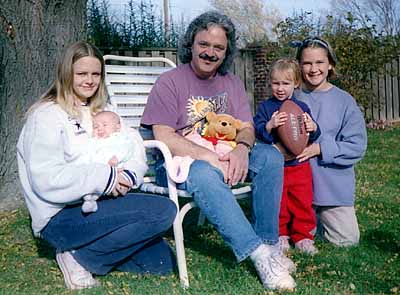 Jim
is undoubtedly one of the biggest voice talents in movie history.
In addition to having been the voice for Winnie the Pooh since 1986, he
has provided voices for characters in TV series including the Chip'n'Dale
Rescue Rangers TV series (as Monterey Jack, fat Cat, and Professor
Ninmul), The Gummy Bears (Zummy), Tale Spin (Don Karnage
and Louie), Darkwing Duck (Herb Muddlefoot/Darkwing), and Goof
Troop (Pete).
Jim
is undoubtedly one of the biggest voice talents in movie history.
In addition to having been the voice for Winnie the Pooh since 1986, he
has provided voices for characters in TV series including the Chip'n'Dale
Rescue Rangers TV series (as Monterey Jack, fat Cat, and Professor
Ninmul), The Gummy Bears (Zummy), Tale Spin (Don Karnage
and Louie), Darkwing Duck (Herb Muddlefoot/Darkwing), and Goof
Troop (Pete).
But it's his work on length-feature animated movies that brought him fame: amongst these, Who Framed Roger Rabbit (a cameo as a bullet), Aladdin (Razoul), The Lion King (Ed, the laughing hyena), Balto (Steele), The Hunchback of Notre Dame, Hercules (Nessus the River Centaur), Anastasia (Rasputin), Antz, Tarzan, The Tigger Movie (as both Winnie and Tigger!), The Road to El Dorado (Cortes) and Titan A.E. (Chowquin).
Jim's movie work has given him an opportunity to meet some movie stars
too, he said. "The majority of them are great. Some of them,
like Gabrielle Carteries [Andrea] from Beverley Hills 90210, want
me to make tapes for their children doing the Winnie the Pooh voice, which
I love to do because it means so much to the kids." Jim Cummings
confessed he could see himself doing cartoons and movies well into his
60s or 70s. "I really have been blessed and fortunate to have accomplished
what I have. I hope to do this for a long time. It's such an enjoyable
job. I love to do it!"
![]() Almost no publicity
surrounded the release of The Tigger Movie, and most people were
even unaware such a movie was hitting the screens. It nevertheless performed
surprisingly well, and showed very strong legs at the box-office.
Almost no publicity
surrounded the release of The Tigger Movie, and most people were
even unaware such a movie was hitting the screens. It nevertheless performed
surprisingly well, and showed very strong legs at the box-office.
![]() According to Jim
Hill, Tigger's original voice, Paul Winchell, was fired in late 1998
after just one day of working on The Tigger Movie. The 76 year old performer
was told that his voice was just too scratchy now to properly portray bouncy,
trouncy Tigger. However, when the Imagineers learned about how shabbily
Disney's direct-to-video folks had treated Winchell, they insisted on hiring
Paul to provide Tigger's voice for their new Many
Adventures of Winnie the Pooh attraction. So, the voice you hear as
you bounce along with Tigger in this WDW attraction is Paul Winchell--not
Jim Cummings.
According to Jim
Hill, Tigger's original voice, Paul Winchell, was fired in late 1998
after just one day of working on The Tigger Movie. The 76 year old performer
was told that his voice was just too scratchy now to properly portray bouncy,
trouncy Tigger. However, when the Imagineers learned about how shabbily
Disney's direct-to-video folks had treated Winchell, they insisted on hiring
Paul to provide Tigger's voice for their new Many
Adventures of Winnie the Pooh attraction. So, the voice you hear as
you bounce along with Tigger in this WDW attraction is Paul Winchell--not
Jim Cummings.
![]() In the sequence
where Tigger is imagining his family, there are several in-jokes. When
Tigger mentions a "jamboree" the Country Bears appear in Tigger form. When
he is ice skating, he passes some skate tracks that form a Mickey head.
Also, in Owl's house, one of the family portraits hanging on the wall is
of the unnamed owl from "America Sings" at Disneyland (he's wearing a pork
pie hat).
In the sequence
where Tigger is imagining his family, there are several in-jokes. When
Tigger mentions a "jamboree" the Country Bears appear in Tigger form. When
he is ice skating, he passes some skate tracks that form a Mickey head.
Also, in Owl's house, one of the family portraits hanging on the wall is
of the unnamed owl from "America Sings" at Disneyland (he's wearing a pork
pie hat).
![]() Variety explained
in February 2002 that the annual theatrical release of a Walt Disney Television
Animation production all started with The Tigger Movie: it was put
into production as a video premiere before the studio decided to take it
out theatrically on Presidents Day weekend in 2000. "The Tigger Movie
was kind of an experiment to see what would happen," Disney TV president
David Stainton said. "We found out some things that have really surprised
us. It was a tremendous success with our core audience. It turns out that
4-year-olds to 8-year-olds and their moms and dads are out there, alive
and dying for our stuff." After originally being penciled in as a theatrical
project, Return to Never Land
was switched to the video schedule before being slotted back in the theatrical
lineup, in the wake of Tigger's success.
Variety explained
in February 2002 that the annual theatrical release of a Walt Disney Television
Animation production all started with The Tigger Movie: it was put
into production as a video premiere before the studio decided to take it
out theatrically on Presidents Day weekend in 2000. "The Tigger Movie
was kind of an experiment to see what would happen," Disney TV president
David Stainton said. "We found out some things that have really surprised
us. It was a tremendous success with our core audience. It turns out that
4-year-olds to 8-year-olds and their moms and dads are out there, alive
and dying for our stuff." After originally being penciled in as a theatrical
project, Return to Never Land
was switched to the video schedule before being slotted back in the theatrical
lineup, in the wake of Tigger's success.
![]() With relatively
tiny budgets, the TV animation movies are solid profit centers for Disney,
whether they get a theatrical or video premiere. For instance, while sources
estimate a budget range from about $8 million-$15 million for each Disney
TV production that takes about 2-1/2 years, The Tigger Movie generated
$46 million in domestic box office receipts and nearly double that worldwide
before it even went to video. By comparison, Disney's full-scale animated
films take twice as long to produce and have budgets of $75 million-$100
million or more since characters and background designs are created from
scratch. The Emperor's New Groove
and Atlantis: The Lost Empire
have generated less than $90 million each at U.S. theaters. The profitability
picture when a Disney TV movie premieres on video is often even greater.
Disney's last two video premieres, Lady and the Tramp II: Scamp's Adventure
and The Little Mermaid II: Return to the Sea, have generated about
$150 million each in domestic consumer spending. That is comparable to,
or sometimes more than, video revenue for Disney's theatrical features
that cost from five to 10 times as much to produce. And the potential upside
for a video premiere is just as high as a theatrical release. Consumers
spent about $300 million on The Lion King II, more than the box
office receipts from any animated theatrical release in history except
one, the $313 million of the original The
Lion King in 1994.
With relatively
tiny budgets, the TV animation movies are solid profit centers for Disney,
whether they get a theatrical or video premiere. For instance, while sources
estimate a budget range from about $8 million-$15 million for each Disney
TV production that takes about 2-1/2 years, The Tigger Movie generated
$46 million in domestic box office receipts and nearly double that worldwide
before it even went to video. By comparison, Disney's full-scale animated
films take twice as long to produce and have budgets of $75 million-$100
million or more since characters and background designs are created from
scratch. The Emperor's New Groove
and Atlantis: The Lost Empire
have generated less than $90 million each at U.S. theaters. The profitability
picture when a Disney TV movie premieres on video is often even greater.
Disney's last two video premieres, Lady and the Tramp II: Scamp's Adventure
and The Little Mermaid II: Return to the Sea, have generated about
$150 million each in domestic consumer spending. That is comparable to,
or sometimes more than, video revenue for Disney's theatrical features
that cost from five to 10 times as much to produce. And the potential upside
for a video premiere is just as high as a theatrical release. Consumers
spent about $300 million on The Lion King II, more than the box
office receipts from any animated theatrical release in history except
one, the $313 million of the original The
Lion King in 1994.
The Tigger Movie represents the first time that Walt Disney Pictures has put Tigger, Pooh, and friends onto the big screen in their own full-length animated feature. Prior to The Tigger Movie, the group had appeared in four short theatrical featurettes, including Winnie the Pooh and the Blustery Day, which won an Academy Award for "Best Cartoon – Short Subject."
Some people may be surprised to find the focus on the movie on Tigger versus the popular Winnie the Pooh. Yet Tigger's bouncy movements and jolly behaviour, and unique qualities seem to breath life into the film.
The Tigger Movie was written and directed by Jun Falkenstein who was also heavily involved with the 1998 Thanksgiving TV special titled "A Winnie the Pooh Thanksgiving." That same year, in April 1998, production of The Tigger Movie officially started. A unit of Walt Disney Television Animation was set aside to do the art direction, storyboarding, and character designs for the animated film. From there scenes were delivered to Walt Disney Animation, Japan. The Japan team ended up animating nearly 60% of the film.
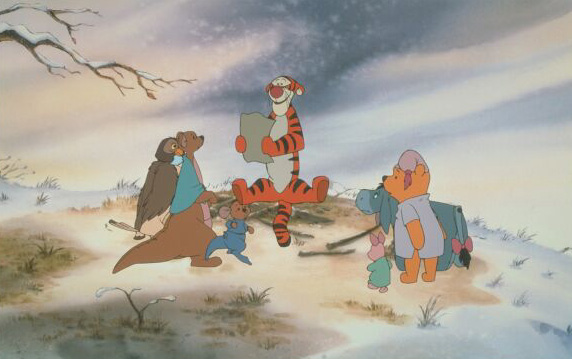 "Our
goal from the beginning was to have a movie that was a little more emotional,"
says Cheryl Abood, who made her Disney debut as the producer of The
Tigger Movie. "We wanted the story to be something that young moviegoers
could relate to, but also be interesting to parents and older audiences
who grew up with Pooh. Our focus was on good storytelling and a high standard
of quality."
"Our
goal from the beginning was to have a movie that was a little more emotional,"
says Cheryl Abood, who made her Disney debut as the producer of The
Tigger Movie. "We wanted the story to be something that young moviegoers
could relate to, but also be interesting to parents and older audiences
who grew up with Pooh. Our focus was on good storytelling and a high standard
of quality."
In the movie, Tigger's playfulness lands him in hot water with some of his friends, one who suggests that he should go find other Tiggers to bounce with. The idea leads Tigger on an emotional adventure to find his family.
A new generation of Disney artists, based in Japan, were handed the majority of animating work for The Tigger Movie. One of the key character animators on the film was Jeff Johnson.
"At first glance, Tigger and Pooh look really simple to draw, but it can be a bit deceptive," says Johnson. "The characters are so recognizable that if even a tiny piece is off one iota, it becomes obvious. Tigger is especially difficult to draw. His anatomy is not like any real tiger. He has his own sense of structure and a lot of little details that have to be attended to. The diamond-shaped crown of his head, for example, is quite challenging when he's turning and doing his wild antics. I always start with a rough first path so I know where his feet and hands are going to be. Then I go in and work on his expressions."
Johnson spent five months working with a team of 30 animators in Japan.
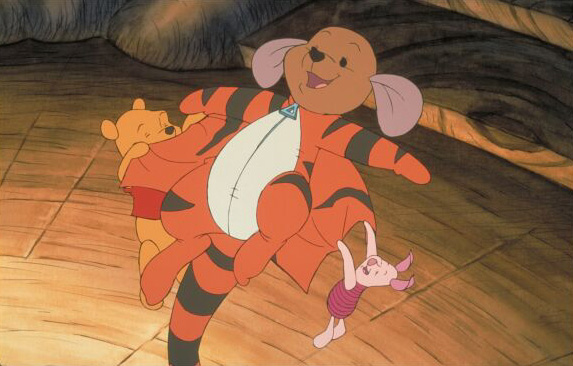 "Working
with the Japanese animators was a great experience," says Johnson. "They
have a lot of talented artists over there and many of them had worked on
Pooh projects before and were quite familiar with the characters. Overall,
they did an amazing job bringing the characters up to a standard that the
feature required."
"Working
with the Japanese animators was a great experience," says Johnson. "They
have a lot of talented artists over there and many of them had worked on
Pooh projects before and were quite familiar with the characters. Overall,
they did an amazing job bringing the characters up to a standard that the
feature required."
The art director for The Tigger Movie was Tony Bluth, who used a stylish "light and airy" watercolor approach to the film's backgrounds. Previously, Bluth had directed and performed in nearly 120 stage productions and served as an illustrator for books.
"We set out to make the definitive 'Pooh' movie," says Bluth. "Moviegoers want to see what it is they loved in the previous films. They want to see the Winnie the Pooh they remember; not some new or different version… We've enriched what was done in the past by adding more detail in the art work along with lots of scope and dimensionality. More interesting and elaborate moves are now possible, including perspective and dolly shots. With the computer, we're able to add some incredible effects animation like snow and falling leaves… Every single scene is aware of light and air with the objects being almost secondary. Then we apply a loose washy watercolor. Color is the very last thing that we add. The whole scene is lit like a stage play, so you know immediately where the lead actor is going to be performing."
Bluth had to also help convey the emotions in the film through the art.
"Our director, Jun, came up with a very clever device of following the emotional arc of the story with the changes in the weather," says Bluth. " We start very bright and very happy in the summer. As we get deeper into the fall, the snow and blizzard reflect Tigger's mood. We use darker colors to complement the action on screen as the drama intensifies."
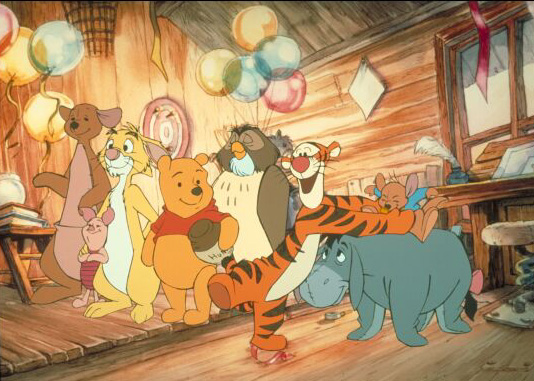 And
speaking of intensity, how would you like to be the voice actor who voiced
both Tigger and Winnie the Pooh. His name is Jim Cummings. Not only does
he voice, but he also sings.
And
speaking of intensity, how would you like to be the voice actor who voiced
both Tigger and Winnie the Pooh. His name is Jim Cummings. Not only does
he voice, but he also sings.
"I think the trick to being Tigger is going back to the original and staying as close to that as I can. Paul Winchell, who originated the character, was and is one of my heroes of the business," says Cummings. "I got his book on how to be a ventriloquist when I was about nine years old and read it from cover to cover."
So what does Cummings tell people when they ask how he can voice two characters? "It's kind of like mental ping pong, he says. "The fact they are so different actually makes it easier for me to do. Pooh is just sort of a gently rolling stream and Tigger's a typhoon. You just address both of them as such and it gives you something to hang your hat on as an actor."
For director Jun Falkenstein, The Tigger Movie marks her feature film directing debut.
"This was an opportunity to delve a little deeper into these characters
and make them really come alive," says Falkenstein. "Everyone can relate
to what Tigger is going through. He's searching for someone who can understand
him. The problem is he can't see the forest for the trees and ignores those
around him who really care, particularly Roo. With this film, I feel like
I was able to put my own spin on the story. I wanted to keep the characters
from getting too fluffy and sedentary. Hopefully the audience will feel
what's going on under the surface."
|
||||||||||||